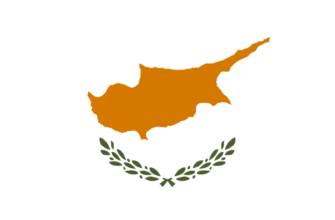The Union of Soviet Socialist Republics (USSR) was a state created on most of the territory of the former Russian Empire and lasted 69 years (from 1922 to 1991). At the time of its collapse, the country’s territory was 22.4 million square kilometers, with a population of about 300 million people.
This is what the last flag of the USSR looked like:

History of the flag
The state symbol of the Soviet Union is one of those symbols that has undergone almost no major changes during its existence. The last time its description was approved by the Constitution of the USSR in 1977 and the regulation on the flag in 1980.
The history of the USSR began on December 30, 1922, when, after two revolutions in 1917, civil war, and the loss of territories, the four republics in the remaining part of the Russian Empire, where Soviet power was established, united into a new union. Among the founders of the Union of Soviet Socialist Republics were:
- Russian SFSR;

- Ukrainian SSR;

- Belarusian SSR;

- Transcaucasian SFSR.

Within the two federative entities (the RSFSR and the ZSFSR) there were other subjects that did not have the status of a founding state at the time, but had limited sovereign rights in the federative union. For example, the RSFSR contained the Turkestan SSR, which after 1924 split up into different territories that later became independent republics.

The ZSFSR consisted of three republics:
- Armenian,

- Azerbaijani,

- Georgian.

The two latter also had separate entities — the Nakhichevan SSR and the Abkhaz SSR, respectively.
In December 1922 it was decided to use a red cloth with a coat of arms in the center as a draft flag of the new state (it was stipulated in the draft constitution of 6.07.1923).

However, attempts to set up the production of such a version proved difficult. In November of the same year, the resolution of the 3rd session of the Central Executive Committee decided to place the symbol of sickle and hammer in the left corner instead of the coat of arms, over which a golden star was placed. In April 1924, a decision of the Presidium of the CEC of the USSR gave a detailed description of the state symbol.

The original view provided for the separation of the wing with sickle, hammer and star, from the rest of the cloth, by a gold stripe, but ten days later — on April 18 — the final version was approved, in which the gold stripe of the wing was removed.

In 1924, national-territorial demarcation took place in Central Asia, and gradually the composition of the USSR began to be replenished with new republics (Turkmen, Uzbek, and Tajik). By 1936, the time when the new constitution was adopted, their number was already eleven (in addition, the Kyrgyz and Kazakh republics, and three Transcaucasian republics instead of the ZSFSR). As a result of the military and political events of 1938-1940, five more republics were added, and the total number reached sixteen:
- Litovskaya;
- Latvian;
- Estonian;
- Moldavian;
- Karelian-Finnish (abolished in 1956 amid improving relations with Finland).
During the short twenty-year period of the existence of the USSR, the country’s flag remained the same, while territorial changes were reflected in the coat of arms. For example, under the 16 Republics, the coat of arms of the Union looked with the corresponding number of red ribbons. The same could not be said of the symbols of the Republics themselves, which changed several times. They could be using abbreviations in Cyrillic, Latin and the national language.


The Soviet Union existed until the end of 1991 and disintegrated into 15 separate independent states. Some former Soviet republics, at the time of the country’s collapse, merged into the Commonwealth of Independent States (CIS), but the nature of this entity and its goals had nothing in common with what they were.

Description
The national flag of the USSR is a rectangular red cloth, the upper corner of which (at the staff) shows a golden hammer and sickle, and above them a five-pointed star framed in a golden border. The proportions of the flag relate to each other as 1 to 2.
Flag colors
The main color of the Union of Soviet Socialist Republics flag is red. Yellow (gold) was used to represent the sickle and hammer and the five-pointed star.
Meaning of colors and flag symbol
The red color of the flag is a symbol of socialism, communism, the leftist movement and revolutionary struggle. It symbolizes the blood shed in the struggle for the rights of the oppressed classes under capitalism, for their liberation from exploitation.
This color has been used since ancient times as a symbol of rebellion: the «red-letter rebellion» in Persia (18th century), the peasant wars in Germany (16th century), the Paris Commune and the revolution in France (18th century).
The symbol of the sickle and hammer is the embodiment of the union of the working class and the collective farming peasantry. Individually, each was considered a class symbol long before 1917. The proletariat organizations of Western Europe, since the second half of the 19th century, used the hammer in this capacity. On the eve of the 1905 revolution, the hammer, in the ranks of the Russian revolutionary movement, became the symbol of the working class.
The sickle was considered to be the most massive peasant tool — a symbol of harvest and harvest.
The image of the sickle superimposed on the hammer means that the hammer, as a heraldic sign, precedes the sickle, and is older than it in meaning. However, the entire emblem reads in the order in which it visually looks: the sickle is called first, and then the hammer.
The five-pointed star with a yellow border on the flag of the Soviet Union — symbolizes the final triumph of the ideas of communism on all five continents of the planet. In fact, it is the symbol of the Comintern.
Other Flags
Before the revolution of 1917 the standard of the head of state was used, which began to be practiced since the reign of Peter I. At the stage of Soviet history there was no separate symbol of the head of state — there was only a symbol of the state, a red banner with sickle, hammer and star. But it too has come a certain way in its development. Among them are revolutionary versions, and banners of regiments, formations, fronts, of which the most famous is the Victory Banner, flying in 1945 over the Reichstag.

The unfading glory of the standard banners of all the fronts and fleets of the Great Patriotic War, carried every year on Red Square during the parade.

Despite the absence of a head-of-state flag, the flag of the Supreme Commander-in-Chief was developed in 1964.

The history of the country’s development has left its mark. In today’s Russia, certain symbols and emblems of that period continue to be used, with adjustments for current realities. For example, the official symbolism of the FSB of the Russian Federation is considered to be the shield and sword of the times of the Soviet Union, the flag of airborne troops is almost the same.



Strange as it may seem, there was no USSR army flag, although its unofficial symbol was considered to be a banner with a red star (reverse).


During the war the design of the banners was slightly changed.


In contrast to the general army flag of the USSR, some branches of the armed forces had their own flags. For example:
- Naval;

- Military-Air;

- Marine units of the Border Troops or ships of the Internal Troops and many others.


From September 1941 the Guards emblems began to be used on the banners.


The variety of all Soviet flags, banners, pennants designed for each type of military organization, state structure, etc. is so great that it is impossible to present separately in this subsection of the article. For a detailed study of a particular issue, it is possible to look up the subject of interest in Internet search engines. For example, a list of Soviet naval flags.
Similar flags
The red flag or the hammer and sickle symbols individually are used on many symbols in other countries. These are:
- political organizations
- Communist Party of China;

- Communist Party of Vietnam;

- National Bolshevik Party of the Russian Federation;

- CPRF;

- Algerian CP et al.

- countries and states
- Turkey;

- China;

- Vietnam;

- Morocco et al.

Interesting facts about the flag
In July 1923 the flag of the newly formed state was used for the first time at the fair in Nizhny Novgorod, but this was not the official authorities’ option.

According to the new wording of the Regulations on the State Flag of the USSR, adopted in 1980, the images of sickle, hammer and star were absent on the reverse side of the State Flag of the Union of Soviet Socialist Republics.

The ratio of the sides of the flag (width to length), equal to 1 to 2, has its own explanation: the lengths of the territory of the Soviet Union — from north to south (width) and from east to west (length) — were approximately the same.
The USSR flag was lowered from the flagpole of the presidential residence at 7:35 p.m. on December 25, 1991. Accidentally or not, both the creation and abolition of the USSR occurred in the last days of December.

General information about the USSR
| Official language | Russian (de facto) national languages in the respective union and autonomous republics (de jure) |
| Capital | Moscow |
| Territory | 22,402,200 km² |
| Population | 293,047,571 people |
| Currency | USSR ruble |
| Phone Code | +7 |
Map of the USSR











I remember visiting a museum with a huge display of the USSR flag. It sparked so many conversations among my friends about history and its impact. It was fascinating to learn how symbolism can connect people across generations, reminding us of our past while inspiring a better future!
I remember visiting an old museum where they had the USSR flag on display. It was fascinating to see the history behind it. My grandpa shared stories of his youth during that era, which made the flag feel alive. History really connects us in unexpected ways!
The USSR flag always reminds me of my grandpa’s stories from back in the day. He said seeing that red flag fly brought a sense of unity and pride. It’s wild how a simple design can carry so much history and emotion for people.